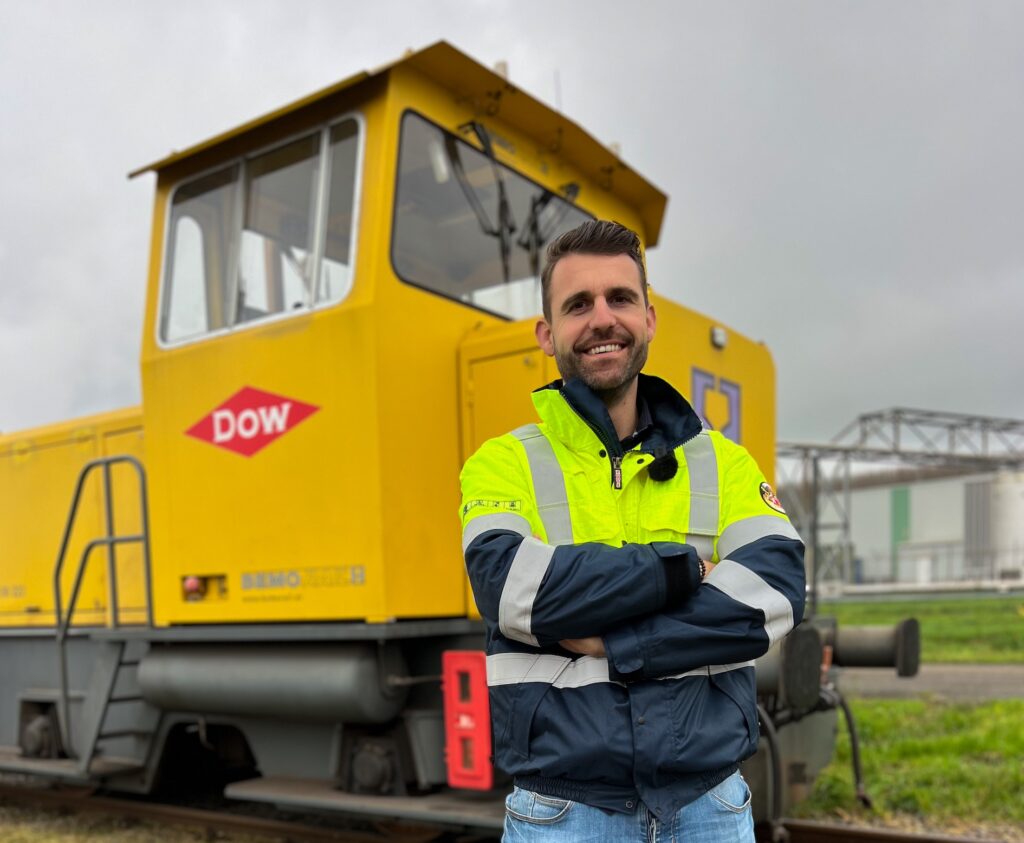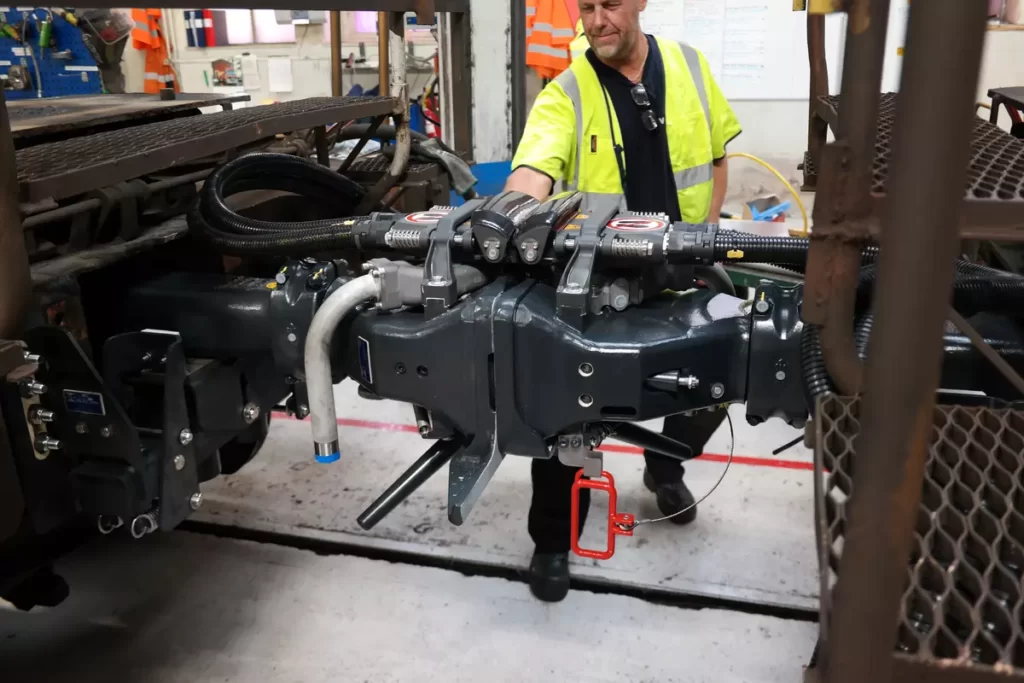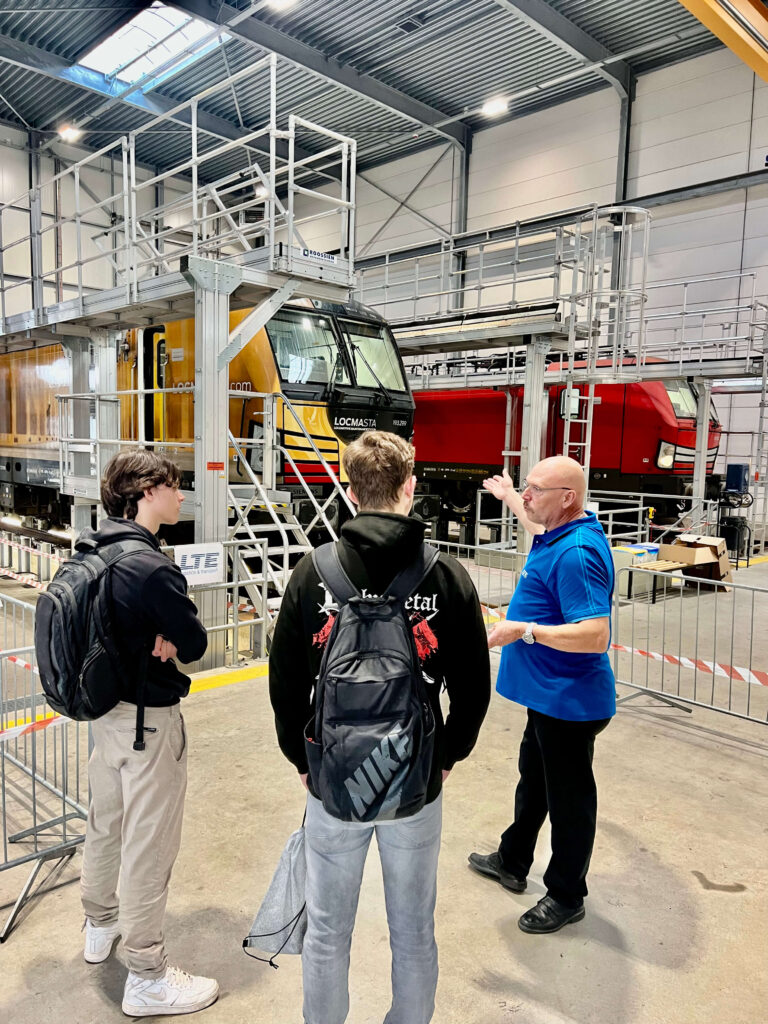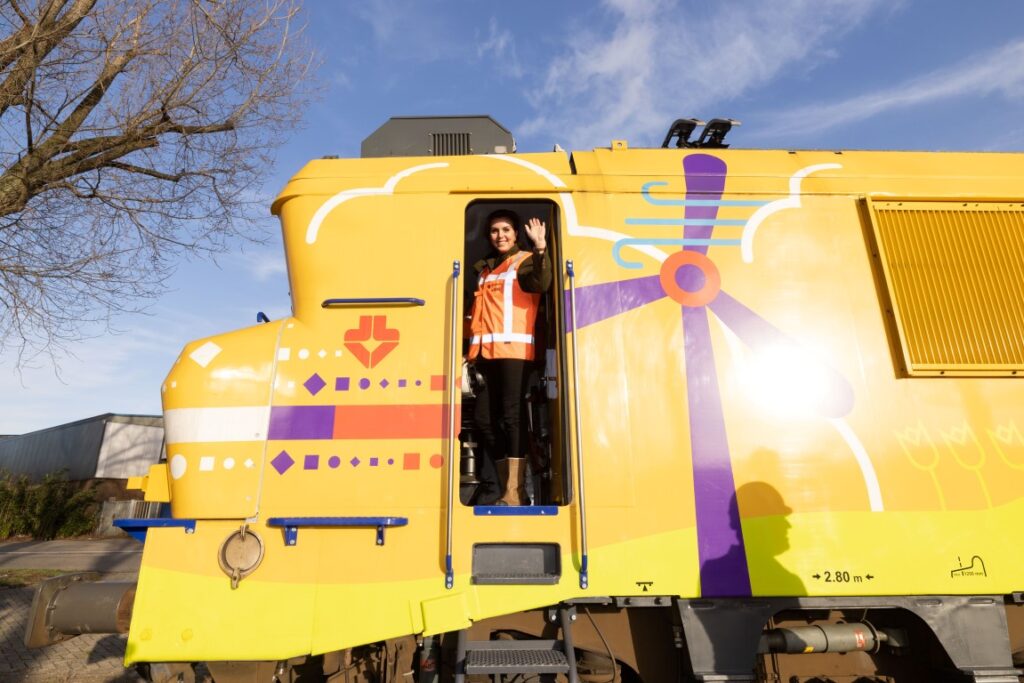For the five railway yards in the Port of Rotterdam, ProRail makes clever use of a computer model to determine from which distance it is possible to extinguish a fire on railroad tracks under different weather conditions. Marcel van Brussel and Jack Konings, who work for ProRail Incident Management in the Fire Service and Risk Management area, explain how the computer simulation works.
Text: Marco Barneveld
A fire in a railway yard must be extinguished quickly and adequately. Certainly when it comes to cargo with hazardous substances. It is not preferable to send firefighters with hoses and heavy equipment onto the tracks. According to the Environmental Department, the Safety Region, and the Labor Inspectorate, a safe alternative must be possible, such as extinguishing at a distance with foam or water.
Space
This means that it must be possible to extinguish from a distance using so-called calamity roads, both at the edges of each yard and between the track bundles. Of course, all railway yards already have emergency routes, but it looked as if more of them would have to be constructed at the expense of tracks. “That would mean that some railway yards would have to shed four to five tracks,” says Jack Konings. “If you build an emergency road around each track, so to speak, you only need to spray five meters. But it’s inefficient because it takes up a lot of space at the expense of scarce tracks. ProRail, of course, wants as many tracks as possible for its customers. We, therefore, sought the perfect balance between the number of tracks and emergency routes, based on the principle that the fire brigade must be able to reach the entire railway yard safely with its fire-fighting equipment in all weather conditions.
Wind direction
ProRail, in close consultation with the authorities, looked for the optimum length of water and foam jets under various conditions. “Normally, you first consider how you want to combat a calamity and then test this in practice,” explains Marcel van Brussel. “In real life or a representative test rig. The challenge of this project was that it was impossible to test every factor in practice. What about different wind forces? What does the fire extinguisher beam do in different wind directions? And what happens if you have the wind in your favor or against you? And you have to take into account extinguishing with water, as well as with foam because you extinguish dangerous substances with foam. However, foam does have an environmental impact, so you can’t just start testing with it everywhere.
A model based on numerical fluid dynamics, or Computational Fluid Dynamics (CFD), provided the solution. “A computer simulation gives the values of relevant quantities,” Marcel explains. “With this model, we can turn all the knobs: one knob wind direction, one knob wind force, more or less pressure, more or less foam, what type of fire-fighting unit. You can simulate everything.”
Representative
The results are used to make more efficient use of the emergency routes at the railway yards so that fewer goods tracks have to make way for the construction of additional emergency routes. “In some places, up to four tracks had to be sacrificed. Thanks to CFD, we have been able to limit this to just one track,” says Marcel.
Getting the model to work and the results accepted was a tough job. “This is a unique project,” says Marcel. “Neither the competent authority nor we had ever worked with it before. Therefore, we worked very intensively with our advisors, the Rotterdam Joint Fire Brigade, and the authorities. Because you can punch things into a computer and show calculations, but how do you convincingly show that the computer has calculated the right figures that are representative for practice?”
“That’s why we included the authorities in all the steps we were taking very early on in the process,” Jack adds. “That has been very insightful. As a result, the model and the associated results were accepted.”
Foam droplets
“At one point, you’re sitting around the table with everyone talking about how small foam droplets behave in the air,” says Marcel. “When do they start to clump? When do they fall apart? How do they behave in the wind? Discussions at the physics level on points and commas. It takes time to talk it through very thoroughly.”
And, of course, there were also tests. “We did a sort of reverse test beforehand with water and with foam,” says Jack. “We used the values that came out of that as a reference for our model. That’s how we validated the model.”
The model results have already been used for the fire extinguisher train and the construction of the emergency facilities at Waalhaven-Zuid. The other yards in the Rotterdam port will also be examined in this way and with this model. ProRail’s project must be completed by 1 January 2023.
Poll
Poll 2: are being overtaken by other modalities
Stay informed?
Subscribe to the newsletter
Contact us
Do you have questions about the initiative Rail Freight, The Future is Ours? Would you like to become an ambassador? Or are you considering transporting goods by rail? Then please contact us. Leave a message with your details and we will contact you within 2 working days.








